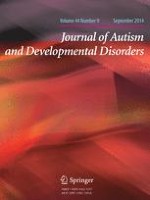01-09-2014 | Original Paper
A Review of the Quality of Behaviorally-Based Intervention Research to Improve Social Interaction Skills of Children with ASD in Inclusive Settings
Gepubliceerd in: Journal of Autism and Developmental Disorders | Uitgave 9/2014
Log in om toegang te krijgenAbstract
Students with autism spectrum disorders (ASDs) often have difficulties in social interaction skills, which may prevent their successful inclusion in general education placements. Behaviorally-based social skills interventions have been shown to be effective in attenuating such difficulties in these environments. In light of the increasing number of children with ASD being educated in inclusive settings and requirements for the use of research-based interventions in schools, this paper (1) analyzes the quality of single-case research using behaviorally-based interventions to improve social interaction skills of children with ASD in inclusive settings and (2) evaluates whether such interventions can be considered an evidence-based practice. Characteristics and components of the interventions are summarized, and their implications for practice and future research are discussed.
